
Rebecca Nesvet, “Miss Whitehead, ‘The Bank Nun’”
An urban legend maintains that early in the nineteenth century, one Miss Whitehead, colloquially known as “the Bank Nun,” frequently visited the Bank of England to accuse that institution of destroying her brother, a financial forger. This essay traces the evolution of this legend. I contend that in 1837, an obscure comic sketch reacted to that year’s major financial crisis by dredging up the Romantic-era case of financial forger Paul Whitehead and focusing on his surviving sister. Displacing her brother’s notoriety onto her, the sketch reinvents her as “the Bank Nun,” a grotesque magnet for lingering Romantic-era anxieties about the circulation of paper credit, financial forgery, and women. A succession of plagiarisms, retellings, and reappraisals of this ephemeral sketch and its portrait illustration made the Bank Nun a folk heroine of enduring resonance. Via this iconic figure, Romantic-era economic controversy haunts London today.
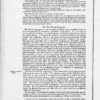
Matthew Jones, “On Nineteenth-Century Welsh Literacies, and the ‘Blue Book’ Education Reports of 1847”
This essay considers the 1847 Reports of the Commissioners of Inquiry into the State of Education in Wales, better known as the “Blue Books,” which alleged that Wales’s Welsh-speaking population was benighted, immoral, superstitious, and barbarous, and in need of English-language education. These factors were said to be compromising the country’s modernization while also, in more quiet ways, threatening British society more broadly. The Welsh language was the primary target, and it was deemed antiquated and unfit for commercial and imperial life. Through the Welsh language, the Blue Books also inveighed against Welsh motherhood, Wales’s increasing Nonconformity, and its recharged and growing literary culture. I place the Blue Books in a larger nineteenth-century Welsh context, focusing especially on how rising rates of literacy and religiosity across the country countered the Blue Books’ primary claims. I discuss with particular emphases the Welsh Calvinistic Methodist movement, the antiquarian movement, the revived eisteddfod literary festival, and the influences of Welsh women in Welsh society and as Welsh mothers. Furthermore, I argue that the Blue Books borrowed much colonialist rhetoric then in fashion that disparaged Irish, Indian, Chinese, and African people. With this in mind, the Blue Books fit in among contemporary colonial documents, and they construct the Welsh in similar manners to how other non-English populations were during this moment of Victorian Britain.

Jill R. Ehnenn, “On Art Objects and Women’s Words: Ekphrasis in Vernon Lee (1887), Graham R. Tomson (1889), and Michael Field (1892)”
Studies of women’s ekphrasis prior to modernism have, so far, tended to focus on individual women writers rather than attempt to identify trends that female authors from a particular time period might share. This essay intervenes in this gap in the scholarship by analyzing ekphrastic prose and poetry by Vernon Lee, Graham R. Tomson, and the co-authors who wrote as Michael Field. As female Aesthetes well-versed in art history and art criticism, as well as contemporary market practices, these nineteenth-century women writers anticipate today’s feminist theorists in the ways in which they were quite conscious of woman’s role as art object and the various functions of that role.
Here I examine Vernon Lee’s somewhat well-known novella Amour Dure (1887) as a foundational case study and then turn to two considerably lesser studied poems: Graham R. Tomson’s “A Silhouette” (1889) and Michael Field’s “Saint Katharine of Alexandria” (1892), for which I also identify the long-lost ekphrastic referent. These three texts all demonstrate how a specific form of aesthetic intertextuality—ekphrastic representational friction—operates as a powerful vehicle for early feminist criticism. In the examples I discuss, gendered critiques drive representational friction between the word, the visual medium, and its original referent—slippages that these art-savvy authors would have easily recognized and had opinions about in the work of others, and intentionally created and/or appropriated in their own work. Importantly, I also argue that a helpful way to think about ekphrastic writing by women writers associated with nineteenth-century British Aestheticism is to consider representational friction with particular regard to how their texts treat objects—seemingly unimportant objects—associated with their subjects.
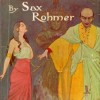
Shanyn Fiske, “Modeling Masculinity: Engendering the Yellow Peril in Fu-Manchu and Thomas Burke’s Limehouse Nights”
This entry deals with the event of the Yellow Peril, which generated fears of “Chinamen” as sexual predators, savage murderers, and criminal masterminds plotting world domination. Curiously, while these images lend Chinese men an aura of powerful virility, popular fiction credited with sensationalizing the Yellow Peril often depicted them as asexual or effeminate. Focusing on the first three novels of Sax Rohmer’s Fu-Manchu series and Thomas Burke’s Limehouse Nights (1916), I challenge the common critical assumption that the feminization or desexualization of Chinese men served to symbolically disempower a political threat. Instead, I suggest that in their interactions with their white counterparts, effeminized and / or desexualized Chinese male characters highlight problems in turn-of-the-century reconfigurations of masculinity. Such problems included recalibrating the Victorian balance between gentlemanly restraint and soldierly aggression in an unstable imperial context; redefining a sense of autonomy in a mechanized world; and renegotiating gender relations in a feminist environment. More broadly, I venture that the critical apparatus of Orientalism, which a number of theorists have applied to Rohmer’s works, is inadequate in explaining the complex interactions between Chinese and Britons in the early twentieth century. In examining the entangled racial and sexual tensions in these works, this entry historicizes the Yellow Peril within a broader context of Western male self-fashioning.
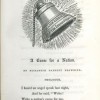
Denae Dyck and Marjorie Stone, “The ‘Sensation’ of Elizabeth Barrett Browning’s Poems before Congress (1860): Events, Politics, Reception”
Elizabeth Barrett Browning’s Poems before Congress paradoxically addresses a political event that never took place: a meeting of European powers to discuss the “Italian question” planned for January of 1860. Nevertheless, the collection addresses several momentous historical developments, including the Second Italian War of Independence in 1859, the intervention of Napoleon III of France in the Italian struggle, and the international conflict his intervention precipitated. Indeed, the book’s publication and the sensation it created in themselves constitute a plurality of events, since the collection appeared under differing titles in England and America and encountered differing responses in each country. Contrary to the still dominant critical view that the volume was almost universally denounced, its reception was shaped by diverse locations, shifting chronological contexts, and conflicting political affiliations. Close analysis of the reviews underscores the importance of these wider contexts, which influence what otherwise appear to be primarily literary or aesthetic judgements. At the same time, analysis of varying responses to not only “A Curse for a Nation” but also “Napoleon III in Italy” and other poems in the volume demonstrates a number of recurring points of contention. These include the collection’s title, the politics of interventions across national borders, English liberalism, the nature of democracy, cosmopolitanism versus nationalism, women writers in relation to politics, poetic form, and, most of all, EBB’s representation of Napoleon III—the issue that is front and centre in most of the 1860s reviews and that shaped, in turn, reactions to all the rest.

Wendy S. Williams, “‘So Very Japanny’: The British Reception of The Mikado in 1885”
This article examines the writings of The Mikado producers and opera reviewers in 1885. It shows that the British were eager to create a quaint, picturesque, “authentic” image of Japan, based on familiar art objects, in order to ease national anxiety about a quickly developing country that was difficult to understand.
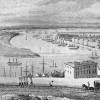
Carolyn W. de la L. Oulton, “‘Coquetting amid incredible landscapes’: Women on the River and the Railway”
The opening of the first direct railway line from London to the Kent coast in 1862 challenged traditional dichotomies between town and country, and contributed to a growing nostalgia associated with the river. Fin-de-siècle writers used the apparent opposition between rail and river, city and country, to ask new questions about the place of women in a rapidly changing world; the transition to a new century further strained the traditional dichotomy between feminised pastoral and masculinised industrial, a tension reflected in the problematic portrayal of rail and water in the work of E. Nesbit.

Lara Kriegel, “On the Death—and Life—of Florence Nightingale, August 1910”
This essay examines the death, and the life, of Florence Nightingale, the great nursing heroine of the Crimean War. An eminent Victorian, Nightingale passed away at the ripe old age of ninety in 1910, at a time when Britain was witnessing great internal strife and facing looming international tension. By that moment, the Crimean War was a thing of the distant past. Even so, Nightingale’s death served as a national tonic. It allowed mourners to rekindle the myths of Nightingale’s lifetime that had unified a ravaged nation in the wake of the Crimean War. Nightingale’s most important reforming efforts, which included nursing education, army improvement, and sanitary reform, both in Britain and in India, would postdate the Crimean War. However, the image of a young Nightingale ministering to the troops in the Crimea would remain the dominant one, not just in her life, but at her death as well. As it assesses the death and life of Nightingale, this essay focuses on two moments of celebrity and mythmaking in the long career of the heroine: the making of her legend in the Crimea and its resurrection at her death. It follows earlier literature, both generated during the nineteenth century and written by those who study it, establishing Nightingale as the avatar of Victorian womanhood. Accordingly, it seeks to understand Nightingale’s passing as a belated death knell to the Victorian age.
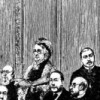
Patricia Rigg, “Gender and Politics in London School Board Elections: Augusta Webster, Helen Taylor, and a Decade of Electoral Battles”
Augusta Webster’s service on the third London School Board 1879-1882 was preceded by a campaign fraught with attempts to deter her from proceeding through the election process. Mentored in August of 1879 by Helen Taylor, the stepdaughter of John Stuart Mill, Webster successfully attained a seat on the Board despite a male consortium of Board members determined to exclude women from this form of public office. The intrigue against her unfolds in the press and in correspondence archived in the Mill Taylor Collection at the London School of Economics. These documents reveal attempts to make her step down as a candidate in order to allow the four men of the previous Board to continue as a consortium for the district of Chelsea. She was accused of selfish ambition, of costing the district money that would be wasted when her inevitable defeat came about, and of impeding the work that could only be done effectively by men. Her success in this election and in the election of 1885 did not mitigate similar problems when she ran for a seat on the Board for the third time in 1888. Women candidates for Board seats were fewer in number than male candidates, and, it is hinted in the press, she failed to retain her seat as a result of her determination to improve the education available to girls and the salaries of women teachers and teaching assistants.
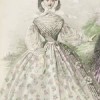
Rebecca N. Mitchell, “15 August 1862: The Rise and Fall of the Cage Crinoline”
First introduced to England by France’s Empress Eugénie in the late 1850s, the cage crinoline signaled a new era in fashion, reaching peak popularity (and peak circumference) in the early 1860s. While the garment has often been understood as a symbol of a repressive patriarchal order intent on confining women, contemporary reporting shows that it was regarded instead as a potentially threatening tool of emancipation. It replaced layers of heavy petticoats with a light and flexible alternative, offering women greater mobility and comfort, and the proportions of the skirts obviated the need for tight-laced corsets. What is more, donning crinoline allowed women to assert physical space in the public sphere, their voluminous skirts forcing men to the margins of the sidewalk or the omnibus—at least according to complaints. Perhaps the most pernicious quality of crinoline, though, was its potential to hide things from the male gaze: bad ankles or smuggled goods might be hidden by the cage, but the risk of concealed pregnancy loomed largest. Reports of death by crinoline fire were matched in their fevered pitch by warnings that crinoline sharply increased rates of infanticide. The range of Victorian responses that accrued around the fashion demonstrates that it was not simply a tool for unilateral oppression or reducible to the manifestation of empty, thoughtless vanity.
